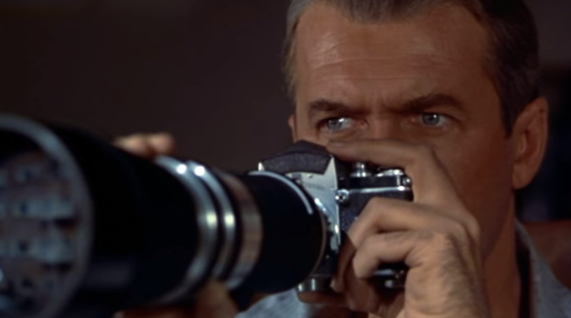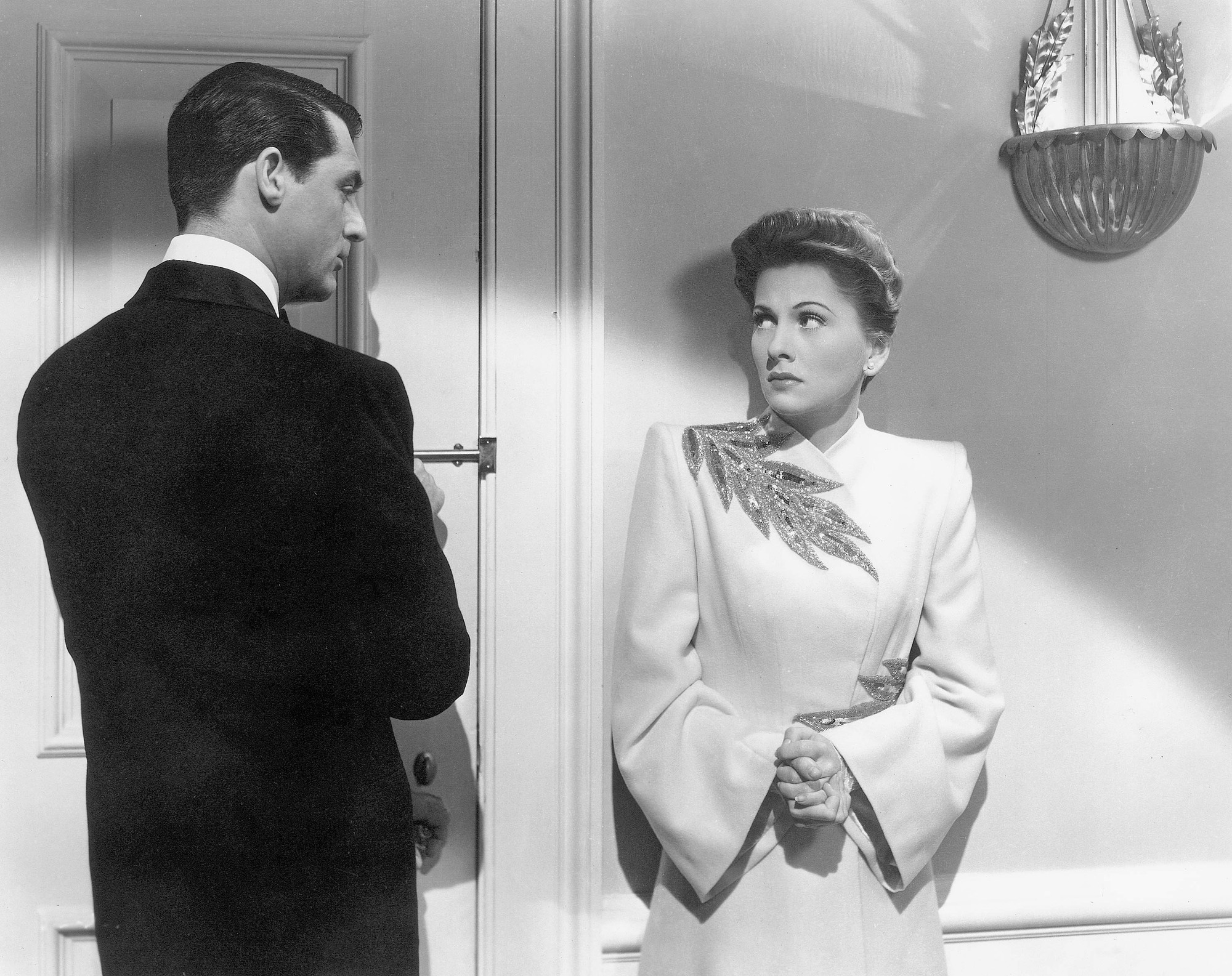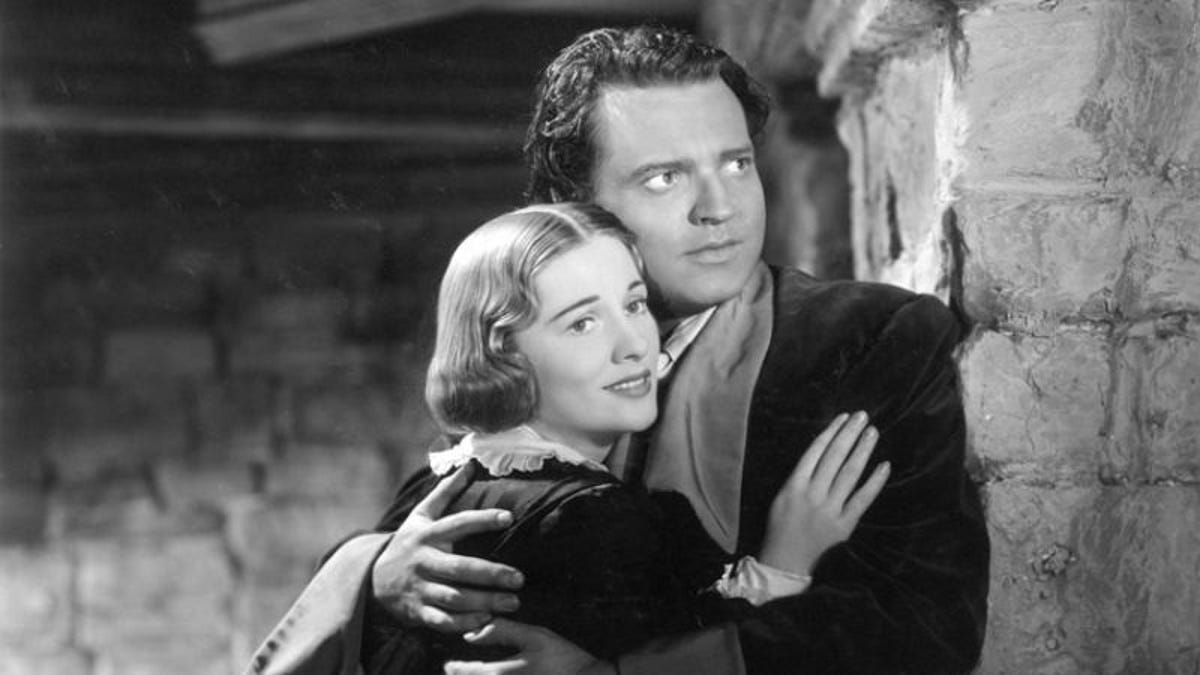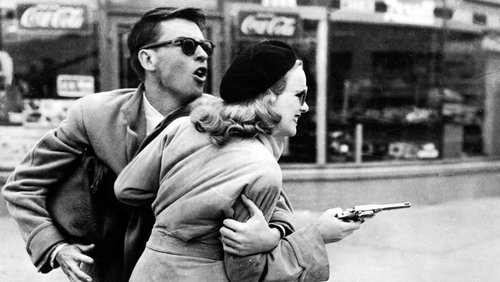 On even a cursory level Touch of Evil has all the ready hallmarks of Orson Welles the auteur. Working in tandem with veteran Universal cinematographer Russell Metty (they had collaborated before on The Stranger), they develop the director’s preferred mise en scene from claustrophobic Dutch angles to deep focus photography.
On even a cursory level Touch of Evil has all the ready hallmarks of Orson Welles the auteur. Working in tandem with veteran Universal cinematographer Russell Metty (they had collaborated before on The Stranger), they develop the director’s preferred mise en scene from claustrophobic Dutch angles to deep focus photography.
It’s no minor coincidence that these all feel like a holdover from his days of Citizen Kane and The Magnificent Ambersons with the late Gregg Toland. Of course, in that time the industry had certainly changed and with it Welles’s place within the establishment.
His most recent film before Evil was the globe-trotting European crime picture Mr. Arkadin and besides the tinges of noir, and an earlier appearance by Akim Tamiroff, it feels closer to the template Welles would have to vie for in the future.
Because Touch of Evil was his last opportunity to make a purely Hollywood picture and he had A-List talent like Charlton Heston and Janet Leigh, and the studio’s technicians, albeit with B-level material. What’s more, he was initially given artistic control over the production which in Welles’s case felt like an utter necessity.
What happened after principal photography was a different story and remains a part of cinema lore up there with the long saga involving the likes of The Magnificent Ambersons director’s cut and the completion of The Other Side of the Wind.
Touch of Evil was altered by the studio and released in 1958. About 40 years later an in-depth memo written by Welles was rediscovered and used to create a cut that purportedly more closely aligned to his artistic vision. Thankfully, we get to see that today. And yet Welles would never work through traditional studio means again.
He would scrounge up joint funding across Europe where his name carried a cachet and in spite of lower budgets, he was able to make a handful of uncompromising films like The Trial and Chimes At Midnight that showcased his skills and gravitas. Touch of Evil is often put up as a convenient sign post to mark the waning of classic film noir. It would also spell a kind of end for Welles also.
Taken in the context of all the Brobdingnagian and Shakespearian heavyweights he played across his career, it’s remarkable to observe what confidence Welles seems to have in himself as a performer. Certainly we marvel at how he could embody Charles Foster Kane at the age of 25 — a man beyond his years — or capture the devilish and brash bravado of Harry Lime in The Third Man.
But Hank Quinlan is yet another iteration of his performative legacy in front of the camera. The man is portly and haggard with Welles taking on ample padding and prosthetics anticipating his future girth. The camera is perfectly angled to make his look all the less appealing, augmenting his size on the screen as he dwarfs the frame.
However, more crucial than that, he is a cruel, racist, and vindictive man in power who feels a need to tip the scales in his favor. In other words, Welles is not squeamish about looking terribly flawed and Quinlan is an iconic example as he looks to plant evidence, frame, and murder all in the name of his perverted sense of truth and justice.
I am always intrigued by this idea that as modern audiences we should come into contact with older cultural texts because they can somehow speak into our present moment and our cultural blind spots. However, we also have the benefit of seeing where our predecessors may have missed something.
Touch of Evil has become more complicated and muddied by its show of inadvertent racism, which was commonplace at the time. It begins with Charlton Heston who plays a stalwart and conscientious Mexican narcotics agent named Miguel Vargas who has married a lovely American woman (Janet Leigh).
The white actor’s complexion and hair are darkened, and he wears a pencil mustache. Meanwhile his wife while no wilting wallflower is slightly patronizing and culturally inept when she comes in contact with anyone else within the Mexican community. One wonders how she fell in love with this man if she doesn’t speak any of his native language and lacks sensitivity. Was he just a pretty face?
Unwittingly it hearkens back to the earliest precedence of the Production Codes forbidding any kind of miscegenation or romance between the races onscreen. Because Leigh and Heston are both white, it proves less disconcerting to a majority white audience. And while Vargas is a harbinger of justice, all the Latino actors who round out the world are characterized as stereotypical thugs and reprobates.
This is not so much a criticism as it is a reality worth noting. Because it potentially clouds the fact Welles fundamentally changed the crux of the source material. By changing Heston’s character from a white lawman and moving the milieu right on the border, his intent is clear. His direct aim is to tackle racism and interracial relationships and tension head on. It creates the soil for much richer thematic ideas and more pointed drama.
Also, the headlining relationship feels less landmark compared to something contemporary like Island in The Sun or The Crimson Kimono; there are also secondary characters who function similarly although they have far less screen time.
Marcia (Joanna Cooke Moore) is the daughter of a local businessman who is killed with his mistress in a car bombing that opens the film so spectacularly. It comes out that she was in the company of a Mexican shoe clerk (Victor Millan) who Quinlan quickly pegs as his primary suspect.
This whole sequence is one of the crucial inflection points of the movie as Vargas recognizes the character of this man he’s dealing with. Because he is meant to be an observer of American tactics — a nation prided on its sense of moral uprightness and democracy in defense of the little guy.
What he sees instead is a man blinded by contempt and prejudice for the Mexican minorities. It’s a terrifying and powerless place to be in as Quinlan’s all but ready to railroad the man. He’s not merely paternalistic or a big brother trying to impart his ideals; he’s unequivocally xenophobic and distrustful.
Behind the scenes the corrupt detective begins sowing lies about Vargas as well using his influence to fabricate his involvement in the local dope racket. Where he goes next is even more incorrigible, but in his own twisted sense of justice he feels completely justified.
One aspect of the film I failed to appreciate before is how it exhibits a precursor to the Bates Motel in Alfred Hitchcock’s Psycho. Leigh’s part is fairly peripheral as she spends the majority of the picture stuck in a half-empty room at the Mirador Motel.
Dennis Weaver behind the desk shows up as a jumpy eccentric — not a prototype for Norman Bates per se — but he has his own paranoia about women. He doesn’t want to be caught making the bed anywhere near her, and he’s easily intimidated.
He’s the least of her worries as some local thugs led by “Pancho” (Val de Vargas) take over the lobby desk and pile into the room next to hers with a certain foreboding. She is alone and isolated as her husband continues with his work; it leaves Mrs. Vargas vulnerable. What ultimately happens to her isn’t as shocking as Psycho, but the danger is palpable as she is ambushed and set-up as part of a broader conspiracy.
The films opening sequence, filmed in Venice, California, is the one for the textbooks, and it rightfully gets its plaudits. There’s an ostentatious bravura around the unbroken 3 minute take that still exemplifies a converging of artfulness and narrative storytelling.
However, this time around I was taken with how Welles’s films his showdown with Akim Tamiroff slimy local crime boss. Not to belabor the comparisons because it’s nothing like the shower sequence, but so much is done through the the impression of images cut together with music, and this juxtaposition between everything in the scene compounding into a stylized and still egregiously violent end.
It galvanizes a drunken, tottering Quinlan as a premeditated embodiment of evil. Opposite Welles the movie has some fairly unexpected cameos from the likes of Zsa Zsa Gabor, Mercedes McCambridge and certainly Marlene Dietrich who plays a prominent role in the picture as a raven-haired Mexican gypsy no less.
Joseph Cotten’s even featured as a misanthropic coroner; I kept on missing him because there’s no vanity to the role. Momentarily I even mistook him and Mort Mills since they both wear glasses, and I misplaced the timber of his voice. No one sound quite like Cotten.
There’s no great substantive thing I can say about all these folks creatively except how evident it is what a vast network of friends and admirers Welles cultivated. True, he had such an inertia around him, drawing other people into his orbit, but as confounding as he was as a person and a maestro, it shows a love of creative people who in turn loved him back.
I’d like to believe this to be true, and I’ll always return to the postscript of The Trial where he lists off all his players as if they’re in a close-knit theater troupe. That’s the energy you get from it.
If I’m to be honest Welles is always larger than life and given the misgivings there are about Heston and Leigh, Joseph Calleia has the most compelling and unsung role in the picture. I don’t recall seeing him this way before and he’s a bit older; he’s not exactly senile, but he’s obviously deferential to others, especially Quinlan.
He likes to be associated with him, to be seen with a man who always gets his mark and who has such a stirling record. Thus, he would never wish to take him down or believe there was any foul play involved.
Still, as much as any of Vargas’s revelations break his heart, he’s not callous or unfeeling. The worst that can be said of him is that he’s pitiful, weak even, and when he’s asked to implicate Quinlan, he’s forced to make a moral judgment.
The corpulent cop goes out as merciless as ever espousing his vitriol against guardian angels and starry-eyed idealists, who wind up being worse than crooks. At least you can always do something with crooks like put them away to rot in jail.
To the very end he shows his distaste for real democracy, not ruled by fear and white supremacy but rather governed by justice for all and due process of law. One imagines that there are whole treatises here pertaining to the unscrupulous tactics of J. Edgar Hoover and the red scare hysteria during the Cold War, but I’m not the one to write it.
Every time I watch a creative endeavor by Orson Welles his stamp is all over it and whether for good or for ill, his work is inimitable. Try as they might, no studio and no one could take that away from him — at least not in its entirety. The singular, mad genius always bleeds through even when tampered with. He was one for the ages.
4/5 Stars

















 With the name of Orson Welles comes any number of conflicting connotations not far removed from his greatest achievement: Citizen Kane. However, if we had to try and pinpoint an apt superlative it would fall somewhere in between a mythic and Brobdingnagian titan of cinema. He was a personality like few others.
With the name of Orson Welles comes any number of conflicting connotations not far removed from his greatest achievement: Citizen Kane. However, if we had to try and pinpoint an apt superlative it would fall somewhere in between a mythic and Brobdingnagian titan of cinema. He was a personality like few others.








 As it turns out, Paul Newman’s a real barn burner. His family name is synonymous with conflagrations and it’s a great entry point for a character, in this case, a drifter named Ben Quick who’s run out of town by the local judge.
As it turns out, Paul Newman’s a real barn burner. His family name is synonymous with conflagrations and it’s a great entry point for a character, in this case, a drifter named Ben Quick who’s run out of town by the local judge.